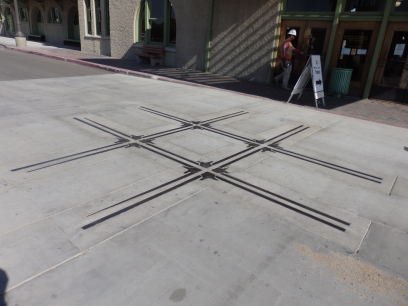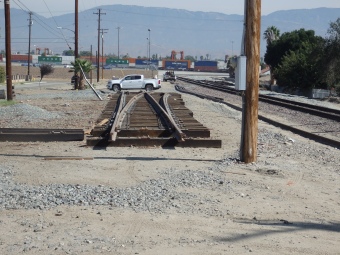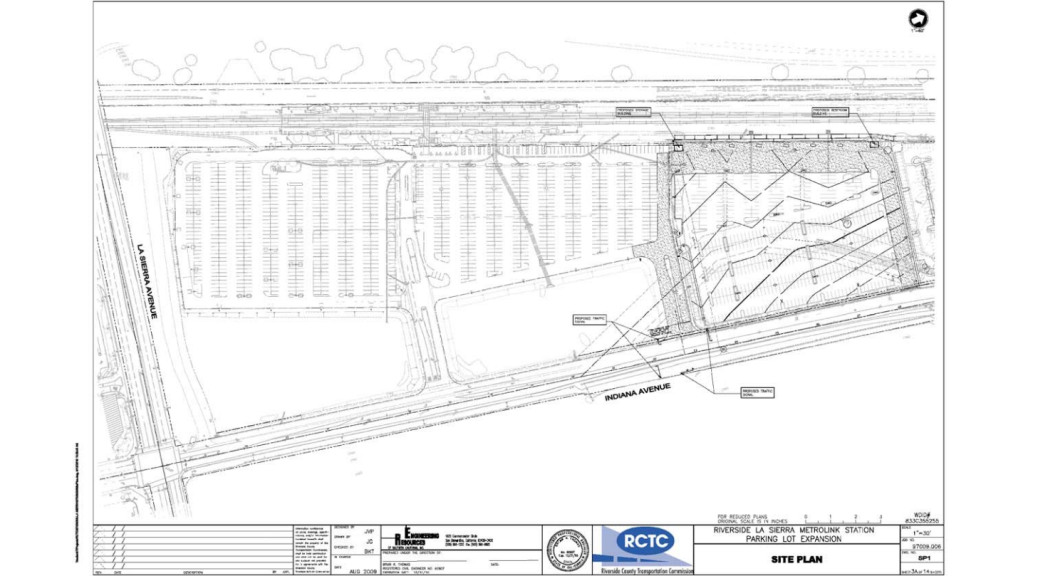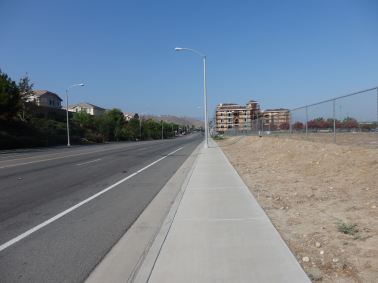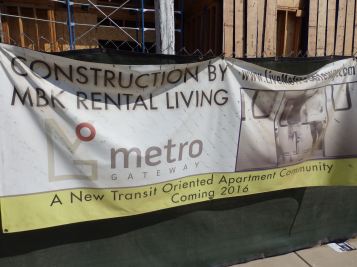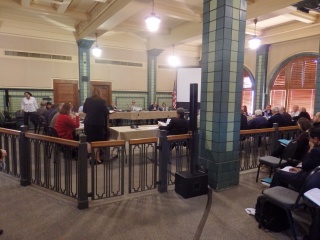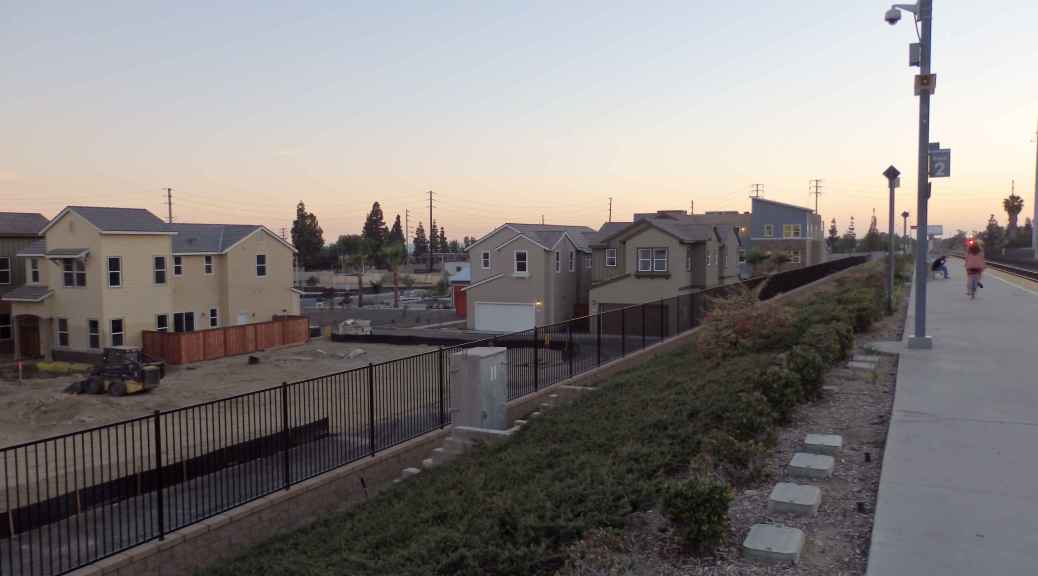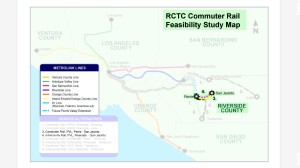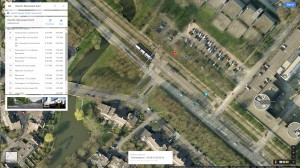
This past Saturday, visitors to the San Bernardino Transit Center (SBTC) were treated to a tunes, a cold drink, and a place to rest between buses as Omnitrans held a party to celebrate the first year of operations of the SBTC. As local all-girl band Alive in the Lights rocked out under a cloudless sky, members of the community participated in a chalk art contest in the plaza in front of the SBTC. Artists were competing for a $250 grand prize and they brought their A-game with many great designs. As they drew, they were entertained by antics provided by the SANBAG See Tracks, Think Train campaign mascot out spreading the word of practicing safety around tracks.
A little over year ago, on August 24, 2015, that dignitaries and curious onlookers stopped by the soon-to-be-completed SBTC in the eponymous city to celebrate the grand opening of the new transfer and customer service facility. The anticipation turned to excitement on September 8, when the SBTC officially opened to the public. Envisioned by Omnitrans since the 1980s, the Transit Center replaces the transfer hub that had floated around the 4th St. area of downtown San Bernardino for decades.
It brings together almost all of their East Valley service into one central location, providing connections to the sbX Green Line, MARTA Off the Mountain service, VVTA BV Link, (as of today) Pass Transit Commuter Link 120, Metrolink by the end of next year via the under construction Downtown Passenger Rail Project, and the Redlands Passenger Rail Project which is projected to be open by 2021. However, the coordination to ensure those connections are available and make sense did delay the completion of the TC, which was originally supposed to open before or at least in conjunction with sbX. At some point in the distant future, CA high-speed rail may also arrive at the site, which would truly awaken the city.
The facility has a staffed customer service desk and 24/7 security to maintain peace and order. Omnitrans has thus far received largely positive reviews of the facility from the riders, many of whom really appreciate the fact that there is an indoor waiting area, public bathrooms, and connections all in one place. The lobby isn’t a grand hall, but it’s design is functional and elegant and provides travelers a much-needed respite from the elements, especially those who are waiting for connections to Omni’s services that run at only an hourly frequency.
However, not everyone is completely happy with the TC. In addition to the usual complaints about the use of tax dollars for public transit, several people have expressed concern about the lack of parking provided at the site. This is certainly an interesting argument because, realistically speaking, there are few instances where Omnitrans’ local service provides a travel time that is superior to that of driving and most of them are not really in the areas around downtown San Bernardino. As such, it doesn’t seem very likely that many people would drive to park and take the bus, something which is already borne out by the parking lots that Omnitrans built for the sbX Green Line that are 99% empty 99% of the time. Building another lot at the TC for bus passengers doesn’t seem necessary and Omnitrans was right to not do so.
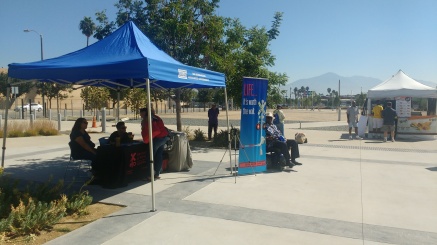
Not doing so also meant that they have space that is available for development on the site that will be easier to convert to that use from an empty lot than it would be from a designated parking lot. However, since the TC is also going to connect to Metrolink, parking will be provided in conjunction with the completion of that portion of the project. Additionally, 10-minute drop-off parking is available on Rialto Ave. at the front of the TC. Furthermore, there are literally dozens of acres of surface lots available within a two block radius of the site that could be tapped with some sort of agreement to provide parking for the TC if it’s truly necessary, including over 13 acres directly adjacent the TC at the San Manuel Stadium.
While parking for cars at the TC isn’t plentiful, there is a decent amount of bike parking strewn around the site, albeit of mixed utility. The good part about it is that it is of an inverted U shape and square, but unfortunately, the racks themselves were installed far too close together, rending them partially useless. In addition to the bike parking, the TC is also host to the San Bernardino Bike Hubitat co-op shop. Since opening in May, the Hubitat has helped hundreds of Omni patrons continue rolling.
In the next few years, the SBTC should see an increase in use as more transit connections come online. However, most of the ultimate success for the Center rests squarely on the shoulders of the City. As they look to exit bankruptcy, they have the opportunity to really become a regional powerhouse and world-class city with smart investments and leadership. The coming transit connections provide an extremely advantageous starting point, but they still need to really take the reigns and look forward to the future. Hopefully, that realization happens soon and we can look forward to many more anniversary celebrations.



